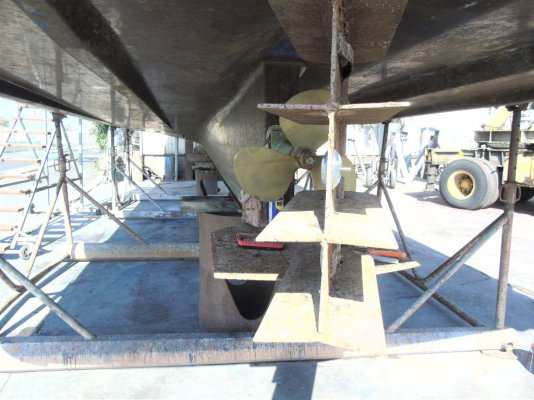Hippocampus
Guru
- Joined
- Jul 27, 2020
- Messages
- 4,184
- Location
- Plymouth
- Vessel Name
- Hippocampus
- Vessel Make
- Nordic Tug 42
Have learned from this thread and thank contributors. Know for blue water sail unlike coastal you have a different attitude. You stay well within expected service life and replace things then. Although on coastal boats folks will replace sails only when they fail or bag out. On ocean boats usually before 7 years with over weight non film sails and in less time with higher tech performance sails. Same with standing rigging. 7-8 years and a slight bit longer for rod. At least the terminals are replaced.. Doesn’t matter if it looks perfect.
Would thing with voyaging motor it would be the same. Beyond routine preventive maintenance you could make a pretty decent estimate of the service life per fuel burnt of the components . Would think (but don’t know) voyaging under powerfolks would have a similar attitude. Even to the level of their spares and specs. On my sailboats carried water in flats inspite of a watermaker and big water tank. Carried a dozen racors inspite of it being under sail 95% of time. Have work arounds for all the failure points you can think of in place before leaving.
Currently on power my concern is lightening strike. Twins or single no power. Fishing nets or other debris. Twins or single shafts/props entangled no propulsion. Think a single in a Kort behind a keel maybe safer in some settings. I understand why we’ve moved to computer controlled engines but think every time we add complexity we add potential single point failure spots. Don’t see twins totally eliminating that. If I went back to voyaging agree a different drive train and power source does add peace of mind. Easily could be a get home of some sort. But think the primary mode of propulsion needs to be a serviceable and bulletproof as possible. Here protection of the prop/drive shaft has merit. In larger boats possible with twins behind skegs but easier to do and more robust with a single behind a keel in smaller boats . Interested in hearing from power voyagers. Beyond direct engine troubles whats your read on the other reasons to lose propulsion?
Would thing with voyaging motor it would be the same. Beyond routine preventive maintenance you could make a pretty decent estimate of the service life per fuel burnt of the components . Would think (but don’t know) voyaging under powerfolks would have a similar attitude. Even to the level of their spares and specs. On my sailboats carried water in flats inspite of a watermaker and big water tank. Carried a dozen racors inspite of it being under sail 95% of time. Have work arounds for all the failure points you can think of in place before leaving.
Currently on power my concern is lightening strike. Twins or single no power. Fishing nets or other debris. Twins or single shafts/props entangled no propulsion. Think a single in a Kort behind a keel maybe safer in some settings. I understand why we’ve moved to computer controlled engines but think every time we add complexity we add potential single point failure spots. Don’t see twins totally eliminating that. If I went back to voyaging agree a different drive train and power source does add peace of mind. Easily could be a get home of some sort. But think the primary mode of propulsion needs to be a serviceable and bulletproof as possible. Here protection of the prop/drive shaft has merit. In larger boats possible with twins behind skegs but easier to do and more robust with a single behind a keel in smaller boats . Interested in hearing from power voyagers. Beyond direct engine troubles whats your read on the other reasons to lose propulsion?

